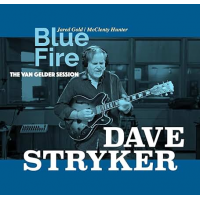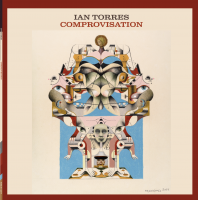Home » Jazz Articles » Album Review » Ramona Horvath Trio: Carmen's Karma
Ramona Horvath Trio: Carmen's Karma
Carmen's Karma is her fourth release with French bassist Nicolas Rageau, with previous projects focused on music of jazz composers, originals and jazz interpretations of Romanian music. Rageau spent six formative years in New York, returning to Paris in 2000, where he has since appeared on stages throughout the city and elsewhere in Europe, frequently with drummer Antoine Paganotti.
Horvath returns to her classical roots for Carmen's Karma, offering adaptations of works by Claude Debussy ("Claire de Bussy"), Gabriel Fauré ("Portrait de la Comtesse"), Maurice Ravel ("Winnaretta Song"), Georges Bizet and Isaac Albeniz ("Carmen's Karma"), Franz Schubert ("La Valse des Asperges Jaunes"), Antonin Dvorák ("Lagniappe"), George Enescu ("Enescool"), Beethoven ("Fantaisie") and Tchaikovsky ("Caipirinha com Pedro"). As a conceptual model for "Carmen's Karma" she and Rageau looked to Franz Liszt's "concert paraphrases," virtuoso transcriptions and fantasias on popular works by Verdi, Donizetti and others. Some selections are contrafacts, others are more simply arrangements. "We wanted to show our love of the jazz tradition through the way they are presented," Rageau stresses, noting that "it's not easy to balance those musical universes without betraying them and without taking it too seriously."
The album opens warmly as Debussy joins the Ahmad Jamal Trio for "Claire de Bussy," an enchanting arrangement of Debussy's "Clair de Lune" in the style of Jamal's "Poinciana" (Ahmad Jamal Trio at the Pershing, Argo, 1958). Rageau and Horvath contribute engaging solos, while Paganotti tenders his version of Vernel Fournier's drum feel. Horvath's approach is bimusical, expressing European classical culture while asserting a singular jazz sensibility. As Laurent Valero remarks in the liner notes, "The cocktail here is much more subtle than a simple 'jazzification' of known pieces; they are considered more as sources of inspiration than taken literally." (See YouTube, bottom of this page.)
Program highlights include two pavanes dedicated to royal patrons of the arts. A lightly swinging jazz waltz, "Portrait de la Comtesse" (for Elisabeth Greffulhe) restyles Fauré's Pavane in F-sharp minor, Op. 50 (1887), while "Winnaretta Song" (for Winnaretta Singer) is an upbeat straight-ahead take on Ravel's "Pavane pour une infante défunte" (1899), which Ravel fashioned after Fauré and which has been known to jazz fans as "The Lamp is Low" (Peter DeRose and Bert Shefter, lyric by Mitchell Parish) since the 1930s.
Planning the project, Horvath sought what she calls "jazz compatible" classical pieces that the trio could interact with as jazz musicians do, rearranging them, improvising with them, playing with them rhythmically. The result is "un bon mélange," as Rageau puts it, and a virtuosic and joyful "voyage en jazz."
Track Listing
Claire De Bussy; Carmen's Karma; La Valse Des Asperges Jaunes; Lagniappe; Portrait De La Comtesse; Enescool; Fantaisie; Winnaretta Song; Caipirinha Com Pedro.
Personnel
Album information
Title: Carmen's Karma | Year Released: 2023 | Record Label: Camille Productions
Tags
PREVIOUS / NEXT
Ramona Horvath Concerts
Support All About Jazz
 All About Jazz has been a pillar of jazz since 1995, championing it as an art form and, more importantly, supporting the musicians who make it. Our enduring commitment has made "AAJ" one of the most culturally important websites of its kind, read by hundreds of thousands of fans, musicians and industry figures every month.
All About Jazz has been a pillar of jazz since 1995, championing it as an art form and, more importantly, supporting the musicians who make it. Our enduring commitment has made "AAJ" one of the most culturally important websites of its kind, read by hundreds of thousands of fans, musicians and industry figures every month.




















